On the corner of Terminus Road and Gildredge Road, diagonally opposite the entrance to Eastbourne’s grand Victorian railway station, this pub was originally the Eastbourne branch of the London and County Bank, purpose built in 1880. It was renamed the London County & Westminster Bank in 1909 and, in 1923, became the National Westminster Bank, later the NatWest. The branch closed on 6 September 1996, having traded at this address for 116 years.
Photographs and text about Friedrich Engels.
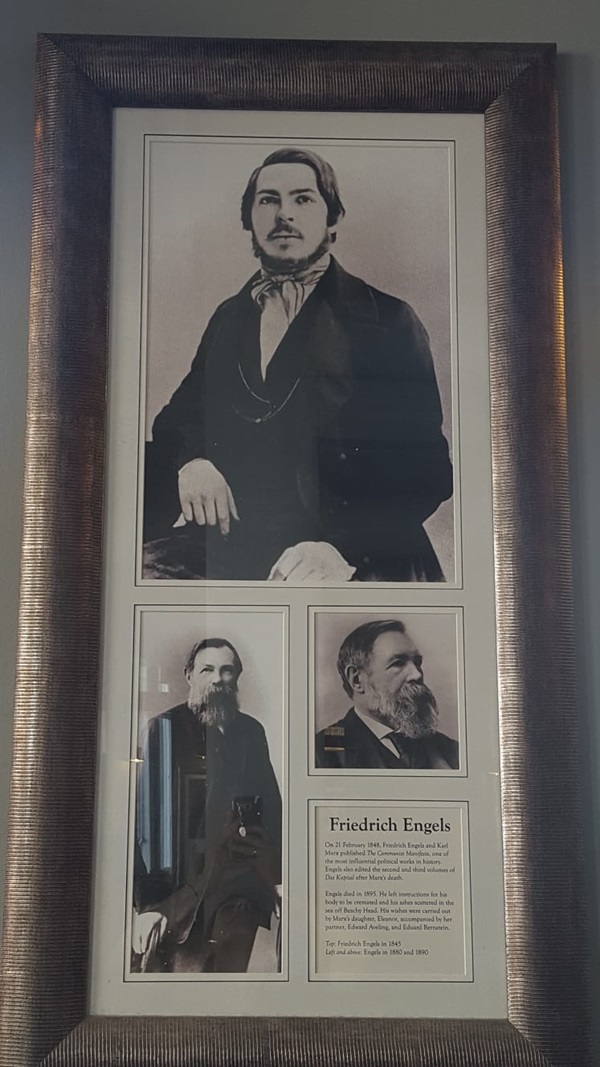
The text reads: On 21 February 1848, Friedrich Engels and Karl Marx published The Communist Manifesto, one of the most influential political works in history. Engels also edited the second and third volumes of Das Kapital after Marx’s death.
Engels died in 1895. He left instructions for his body to be cremated and his ashes scattered in the sea off Beachy Head. His wishes were carried out by Marx’s daughter, Eleanor, accompanied by her partner, Edward Aveling, and Eduard Bernstein.
Top: Friedrich Engels in 1845
Left and above: Engels in 1880 and 1890
A print and text about royal visitors.
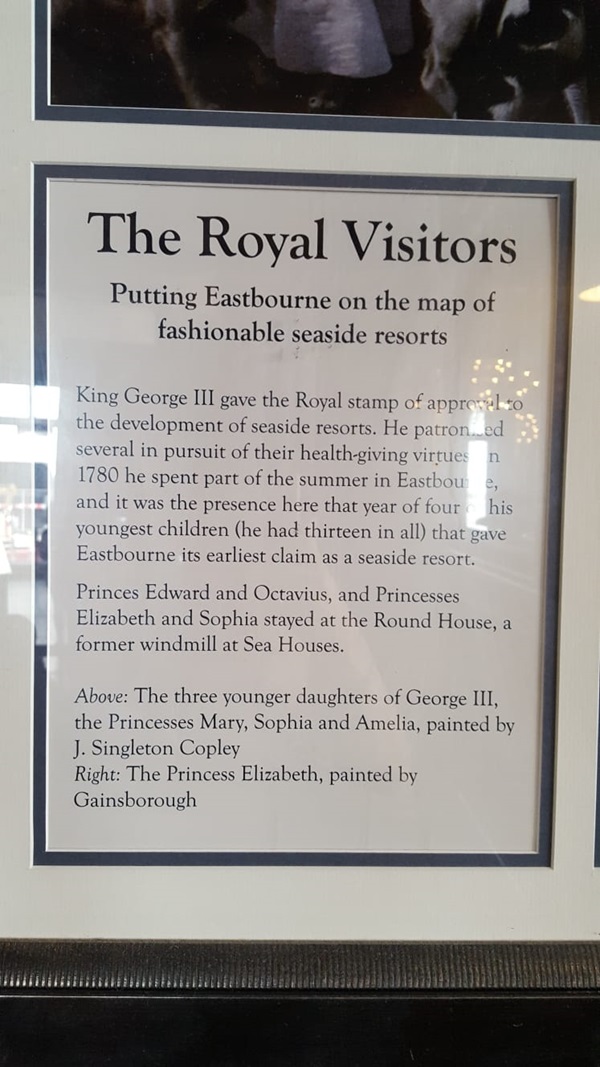
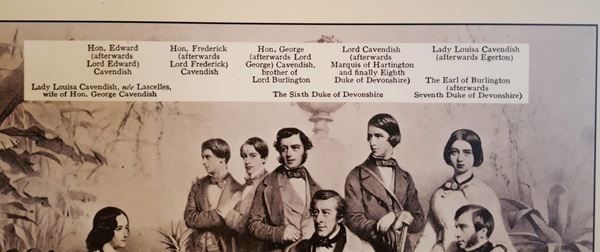
The text reads: King George III gave the Royal stamp of approval to the development of seaside resorts. He patronised several in pursuit of their health-giving virtues in 1780 he spent part of the summer in Eastbourne, and it was the presence here that year of four of his youngest children (he had thirteen in all) that gave Eastbourne its earliest claim as a seaside resort.
Princes Edward and Octavius, and Princesses Elizabeth and Sophia stayed at the Round House, a former windmill at Sea Houses.
Above: The three younger daughters of George III, the Princesses Mary, Sophia and Amelia, painted by J Singleton Copley
Right: The Princess Elizabeth, painted by Gainsborough.
Text about Eastbourne’s fear of invasion.
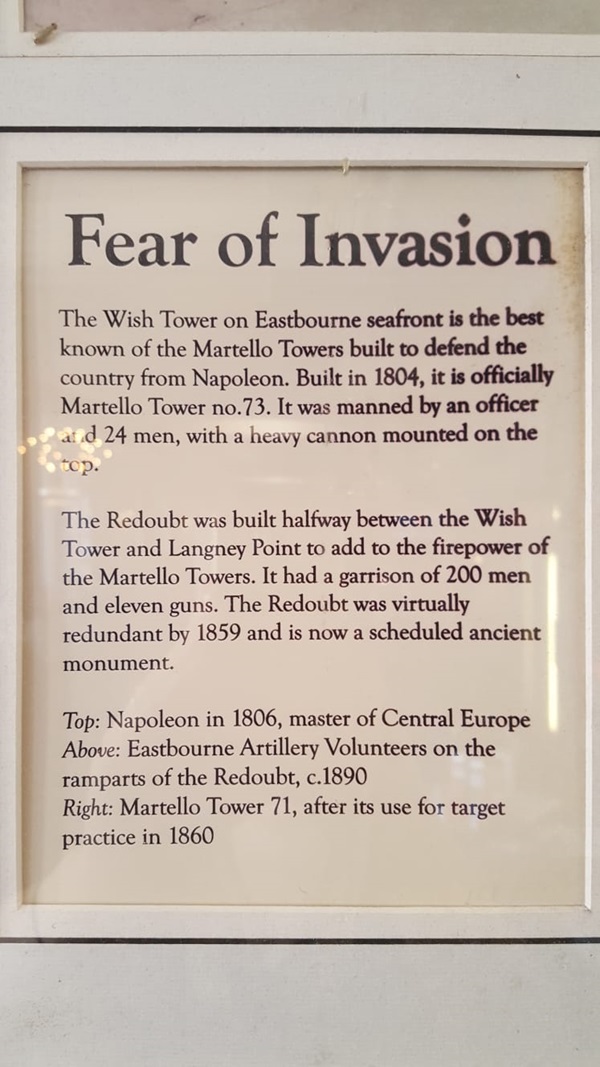
The text reads: The Wish Tower on Eastbourne seafront is the best known of the Martello Towers built to defend the country from Napoleon. Built in 1804, it is officially Martello Tower no. 73. It was manned by an officer and 24 men, with a heavy cannon mounted on the top.
The Redoubt was built halfway between the Wish Tower and Langney Point to add to the firepower of the Martello Towers. It had a garrison of 200 men and eleven guns. The Redoubt was virtually redundant by 1859 and is now a scheduled ancient monument.
Top: Napoleon in 1806, master of Central Europe
Above: Eastbourne Artillery Volunteers on the ramparts of the Redoubt, c1890
Right: Martello Tower 71, after its use for target practice in 1860
External photograph of the building – main entrance.
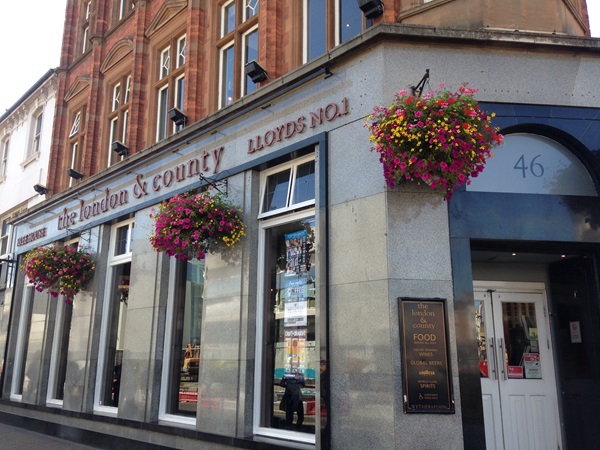
If you have information on the history of this pub, then we’d like you to share it with us. Please e-mail all information to: pubhistories@jdwetherspoon.co.uk